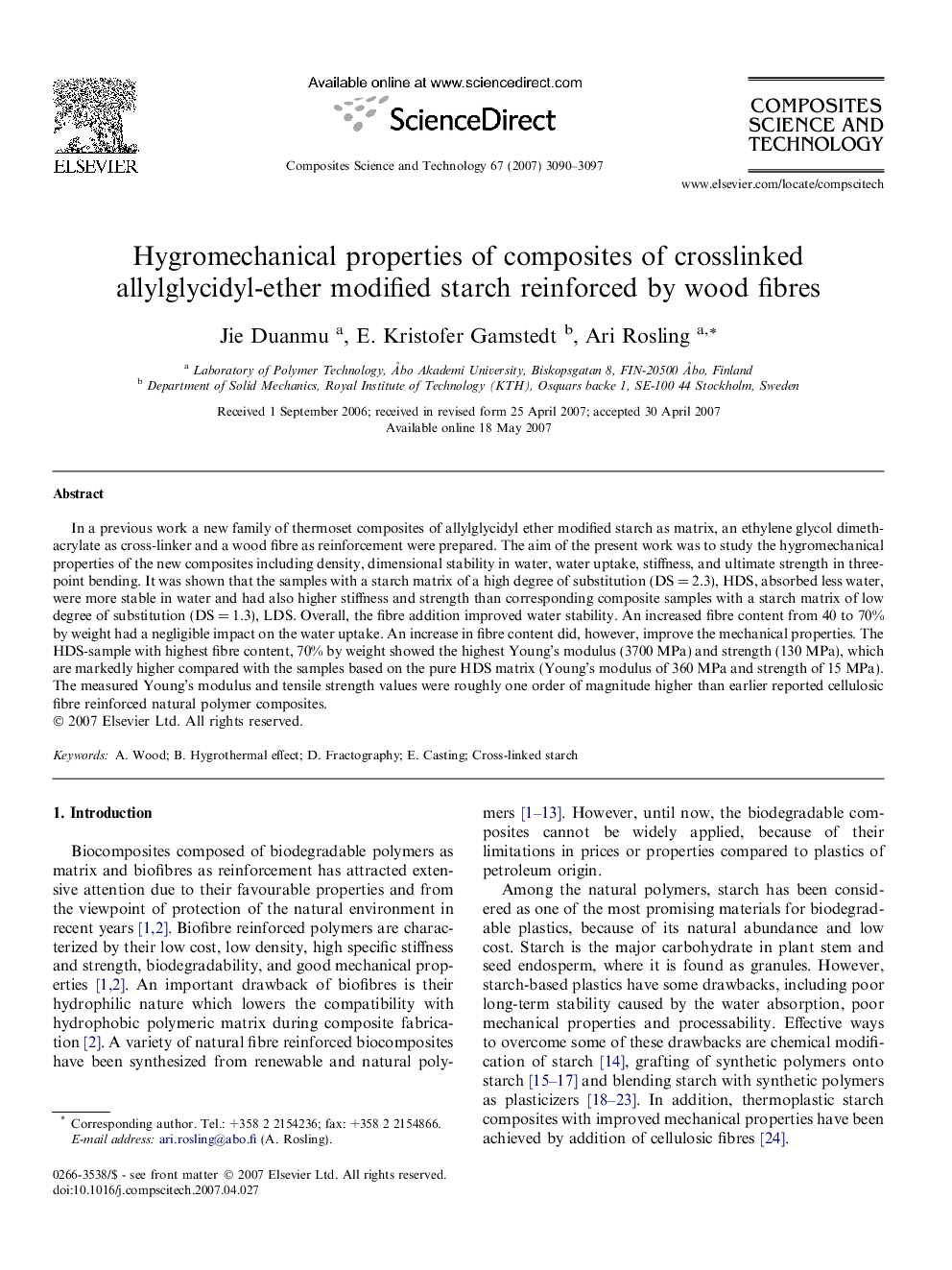| Article ID | Journal | Published Year | Pages | File Type |
|---|---|---|---|---|
| 821669 | Composites Science and Technology | 2007 | 8 Pages |
In a previous work a new family of thermoset composites of allylglycidyl ether modified starch as matrix, an ethylene glycol dimethacrylate as cross-linker and a wood fibre as reinforcement were prepared. The aim of the present work was to study the hygromechanical properties of the new composites including density, dimensional stability in water, water uptake, stiffness, and ultimate strength in three-point bending. It was shown that the samples with a starch matrix of a high degree of substitution (DS = 2.3), HDS, absorbed less water, were more stable in water and had also higher stiffness and strength than corresponding composite samples with a starch matrix of low degree of substitution (DS = 1.3), LDS. Overall, the fibre addition improved water stability. An increased fibre content from 40 to 70% by weight had a negligible impact on the water uptake. An increase in fibre content did, however, improve the mechanical properties. The HDS-sample with highest fibre content, 70% by weight showed the highest Young’s modulus (3700 MPa) and strength (130 MPa), which are markedly higher compared with the samples based on the pure HDS matrix (Young’s modulus of 360 MPa and strength of 15 MPa). The measured Young’s modulus and tensile strength values were roughly one order of magnitude higher than earlier reported cellulosic fibre reinforced natural polymer composites.
